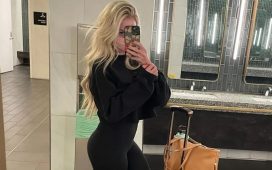One of the least enticing aspect of raising a baby is possibly dealing with the constant hassle, expense and wastefulness of nappies. If overflowing, smelly bins plus $20 (or more) a week spent on single-use products doesn’t appeal to you, you’re probably leaning toward modern cloth nappies.
Of course, cloth nappies are not for everyone. The first few months of a baby’s life are incredibly hard and not everyone will be in a position to do the extra laundry. Also, at $10 to $35 each, cloth nappies are an investment. While cheaper in the long run, it can feel daunting to spend big when a baby is coming.
If you’re ready to take the plunge, prepare yourself with the buyer’s guide below and you’ll get more return on your investment.
Try before you buy
Most nappy brands helpfully offer starter packs that allow you to mostly rely on cloth and see if you like it before buying more. You can also look for a “part-time” bundle that is explicitly intended for families wishing to mix cloth and disposable.
Another option is cloth nappy libraries, which lend nappies in blocks of three or four weeks with a one-week grace period for washing and sanitising. Libraries do often require a security bond.
You can also buy cloth nappies secondhand from many brands, which saves you about $10 a nappy. “Buy nothing” groups are also a great place to get secondhand cloth nappy collections.
Finding the right fit
Modern cloth nappies fit differently to disposables, sitting a bit lower on your baby. The leg seal is what works to prevent leaks rather than the waist, so it’s important that the seal is snug on your child’s legs.
They are also commonly designed as fitted nappies which are also “one-size-fits-most”. With this style, you adjust the fit with the snaps or velcro on the nappy cover, and increase absorption by doubling up on inserts or using special inserts for night-time. This is the most popular style of modern cloth nappy.
The South Australia-based organisation Clean Cloth Nappies offer a downloadable nappy fit guide. Use it to make sure that you know how to fit cloth nappies on your newborn, crawler, or toddler. You should not have to buy different cloth nappies for your newborn, they should be adjustable from birth onward.
Velcro v snaps
Some designs have velcro while others have snaps. They each have their pros and cons – consider that velcro is faster but can collect dirt. Darlings Down Under have a helpful guide to the different designs out there.
Another style to consider is the ‘pre-flat’ made of stretchy, easy-to-dry fabric that doesn’t take up as much storage space (but which requires a water-resistant cover). If your baby has chubbier-than-usual legs, some brands do offer larger sizes – and there are even cloth pull-ups.
Do the maths
How many cloth nappies will you need to solely rely on them? This depends on the size of your washer as well as the amount of sunlight you’ll have (which affects how quickly they dry) and even your preferences for how often you’d like to or would have time to do laundry.
For full-time use, it’s recommended to have between 24 and 30 cloth nappies. Depending on their soiling, you can sometimes use a cover more than once with fresh inserts (and some brands actually sell two inserts with each cover). Newborns require very frequent changes compared with older babies.
One approach might be to rely on a library service for the first few months of your baby’s life when you’ll need more nappies, then adjust down to having only 12-15 nappies. Either way, the reality is almost-daily laundry, so if that’s not your preference, you’ll probably opt to be a part-time cloth nappy user.
Find a washing routine
All new nappy covers and inserts need to be washed before use (just like baby clothes).
It’s a good time to check that your washing machine is in good working order and clean the filter – it’s going to be getting a lot of use. You’ll also want to create a designated area for line-drying the nappies away from the sun, even if you have a dryer.
Soaking dirty cloth nappies is not recommended as it degrades the fabric. Instead, keep your used nappies in a “dry pail” that allows air flow, as described by NappyLuxe.
The Nappy Gurus provide information on the best approaches to washing, drying, and generally caring for cloth nappies. They and most other brands recommend a two-step washing routine, with a lighter dose of detergent on the first round, to ensure that ammonia doesn’t remain on the inserts.
It’s generally recommended to line-dry cloth nappies (all parts) away from direct sun. A machine dryer on low heat will work as well, but it shortens the life span of the nappies and libraries may prohibit this with their products.
Go slow
If daily washing, drying, and storing of cloth nappies feels daunting, start with a small collection from a library and build up from there, or see what’s in your local buy nothing group. If you let yourself warm up to cloth nappies slowly, you may have more months or years of success compared with going hard at first and then dropping it entirely. And don’t beat yourself up if you have to adjust your expectations. Every family is different and each effort you make to reduce single-use waste is worthwhile.














